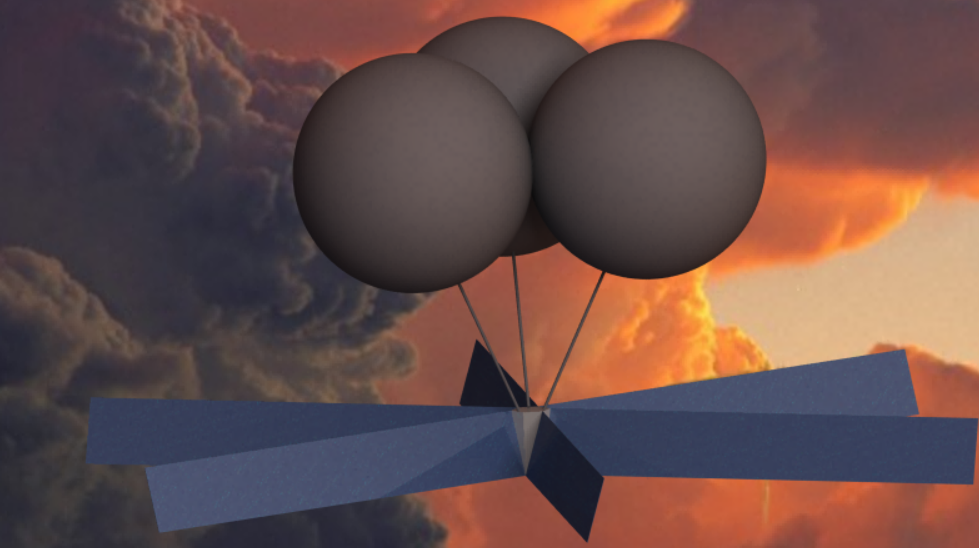2.3.1. launch pad
The Venusian launch pad has the particularity (like the whole base) to be floating in the atmosphere. At the time of his arrival on Venus, he took only hydrogen to support its own weight, hydrogen for support the launcher will be produced by the ISRU module. It is made up of a thermally insulated central tube to limit the power required for the propellants already inside the tanks. The tube and the launchers are held by three telescopic arms, consisting of three segments of 20 m supported by gas balloons carrying. The launch pad can be 3 configurations.
Reception configuration: during the assembly of the launcher, the arms retract (to minimize bending) and place themselves horizontally to allow space between the balloons to bring down the floors into the tube. stage carried by their balloons are placed above the launch pad, a system of drone equipped with cables docks at the bottom of the stage in order to winch it towards inside the tube, a balloon folding system is installed at the top of the tube. Filling the first stage can start in this configuration (within the limits of what the arms support in a horizontal position) waiting for the other elements.
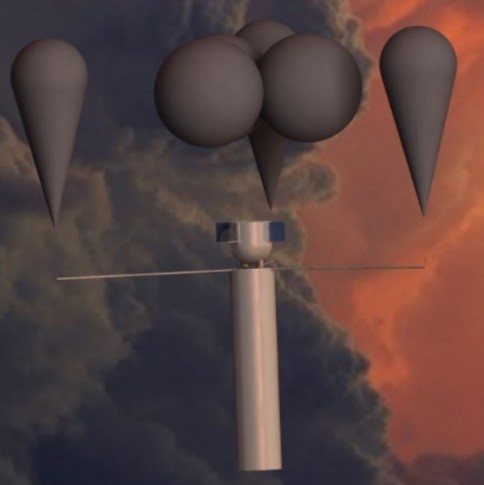
Filling configuration: to compensate for the mass intake of propellants, balloons inflate to stabilize the whole, but the arms can no longer stand the moment of bending. They unfold and position themselves vertically, to work in pure traction and better support the load.
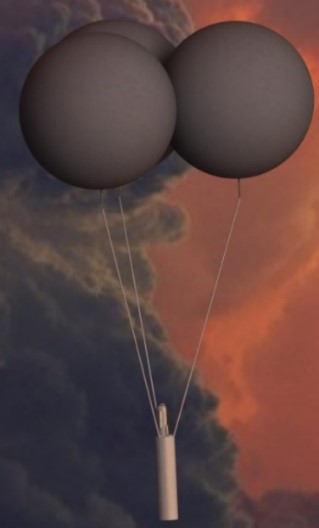
launch configuration: little time before firing, the tube walls open so as not to be torn off by the engine’s breath and the cables connecting the launch set to the other modules are unrolled to leave him slack. At the time of ignition engine on the first stage, the inflated balloons could cause quick climb (acceleration of 10g vs. 0.5g) the shot pitch brutally unloaded the weight of the launcher. For the first few seconds, the two elements (launch pad and launcher) rise at the same speed about the first ten metres (hence the slack in the cables). This delay allows the arms to be passed horizontally and thus to keep the balloons away from the trajectory of the launcher before it climbs back into the tube and exerts a thrust on the way.
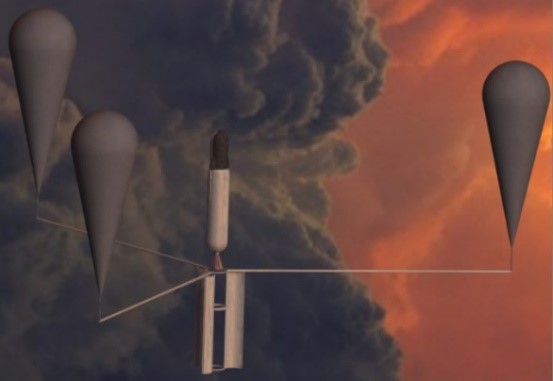
| launch pad | Note | Mass (kg) |
| Balloons | 1 500 | |
| Hydrogen portance | Only for arrival on Venus | 750 |
| Structure | 2 500 | |
| Miscellaneous systems | 750 | |
| Launcher spare parts | 2 000 | |
| Design Reserve | 500 | |
| No shooting | L – 21 m, D 2.5m | 8 000 |
2.3.2 ISRU Module: In-Situ Resource Use
It would be inconceivable to carry all of the launcher’s fuel from Earth. Fortunately for the project, at an altitude of 54 km, the base is located in a layer of sulphuric acid clouds. However, this acid, once collected, can, by pyrolysis to 300°C decompose into sulphur trioxide (rejected) and water, from which are extracted oxygen and hydrogen from MMV, RCT and the 2nd stage. Methane the first stage is produced, thanks to Sabatier’s reaction, hydrogen from acid and atmospheric CO2. The ISRU module is separated from the launch pad, to avoid damage during launch, and is connected by an umbilical. In addition to the propellants, the ISRU module will have to produce the gases carrying the base, especially for the launch pad during filling. The production of propellants produces excess oxygen that is lighter than CO2 atmosphere, it is injected into a separate compartment of the balloons of the no shots to reduce the need for hydrogen.
Here’s the presentation of chemical processes to produce one kg of each type of propellant, excess oxygen is displayed with the lift it creates.
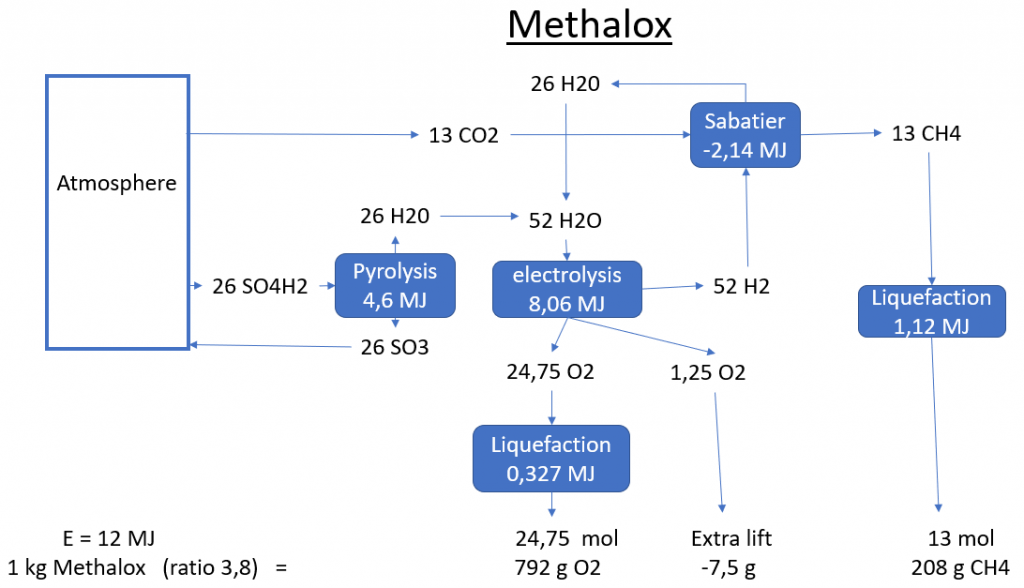
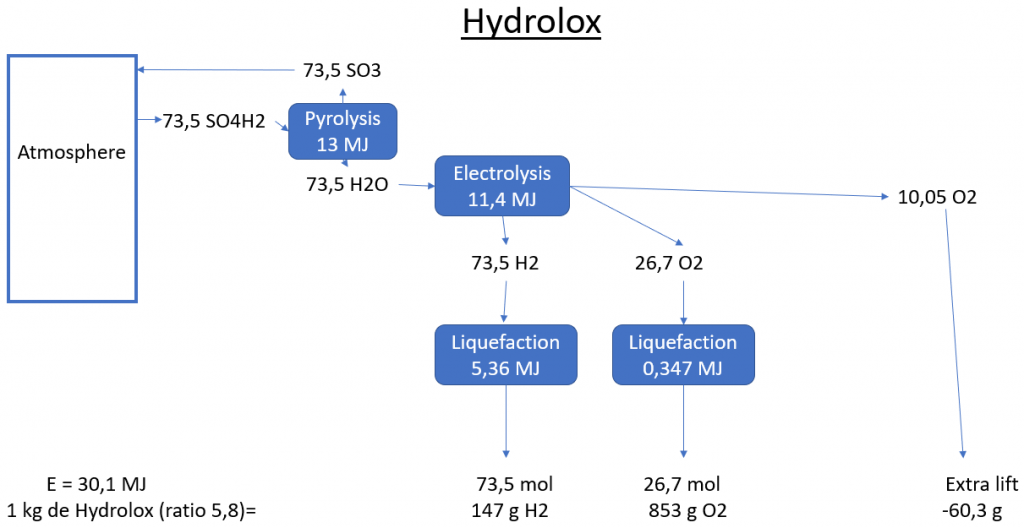
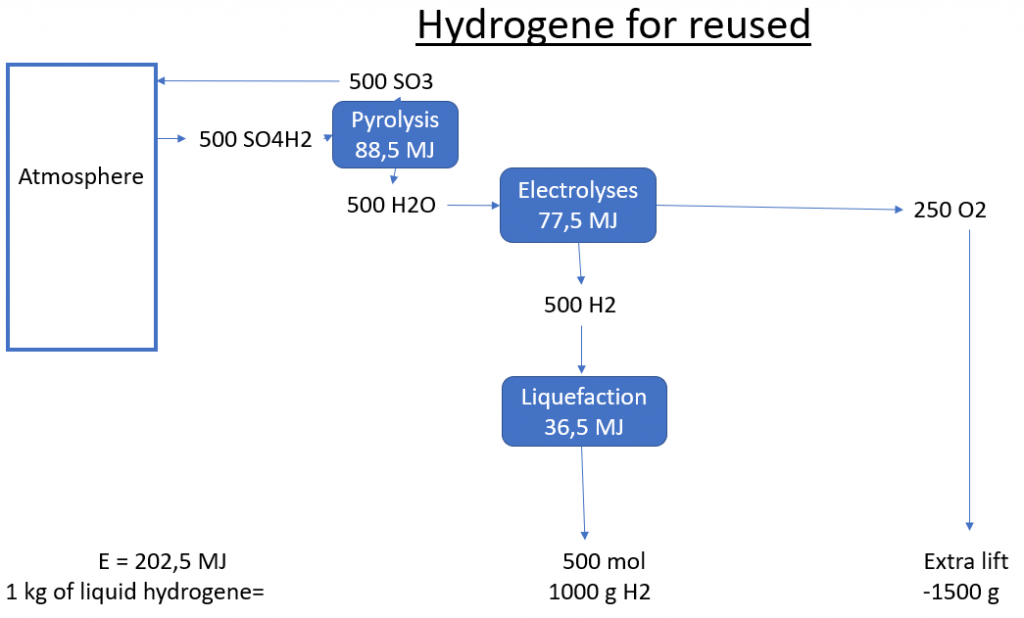
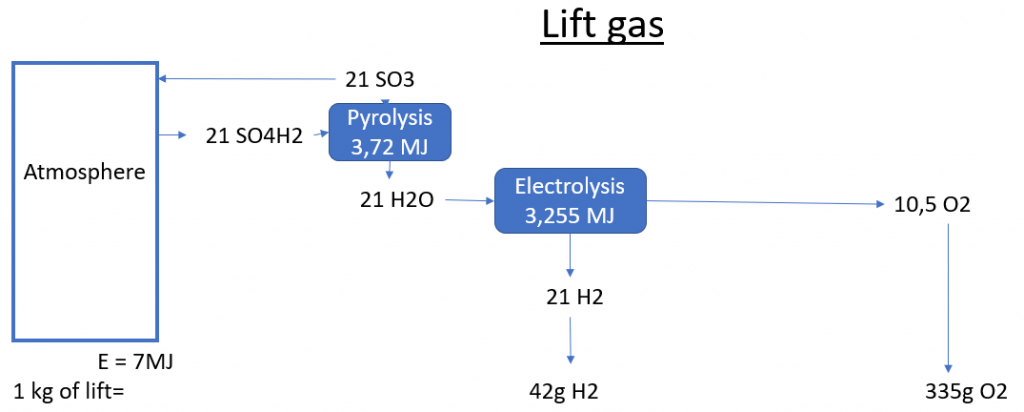
The pitcher asking for the most propellants is the one topped RCT, it requires 75 t of methalox, 28 t of hydrolox, 0.825 t hydrogen recovery and carrying gas for 99.51 t of charge.
It is therefore necessary to 658 t sulphuric acid, 42.9 t CO2 and about 2,606 GJ energy. For 2 shots per mission (for RCT and MMV), the filling must be 200 earthly days. So you don’t have to store too much energy, the ISRU process is only done during periods of sunshine. The theoretical need is therefore 302 kW, but the project is sized for 500 kW safety, and takes into account the thermal loss of propellants through the walls of the launch pad. Given the proximity to the sun, Venus receives 2620 W/m2 of solar energy outside the atmosphere. It can be estimated that this 1750 W/m2 at an altitude of 54 km, implying 1143 sqm of solar panels with a yield of 25%. In addition, the module takes advantage of the reflection of light on the lower layers of the atmosphere and creates a omnidirectional lighting that is not taken into account and serves as a safety margin.
| ISRU | Note | Mass (kg) |
| Balloons | 300 | |
| Hydrogen lift | 500 | |
| Energy | 2 300 | |
| Structure | 1 000 | |
| Umbilicals | Linked to the launch pad | 500 |
| ISRU | 2 700 | |
| Reserve Design | 700 | |
| Total | 8 000 |
